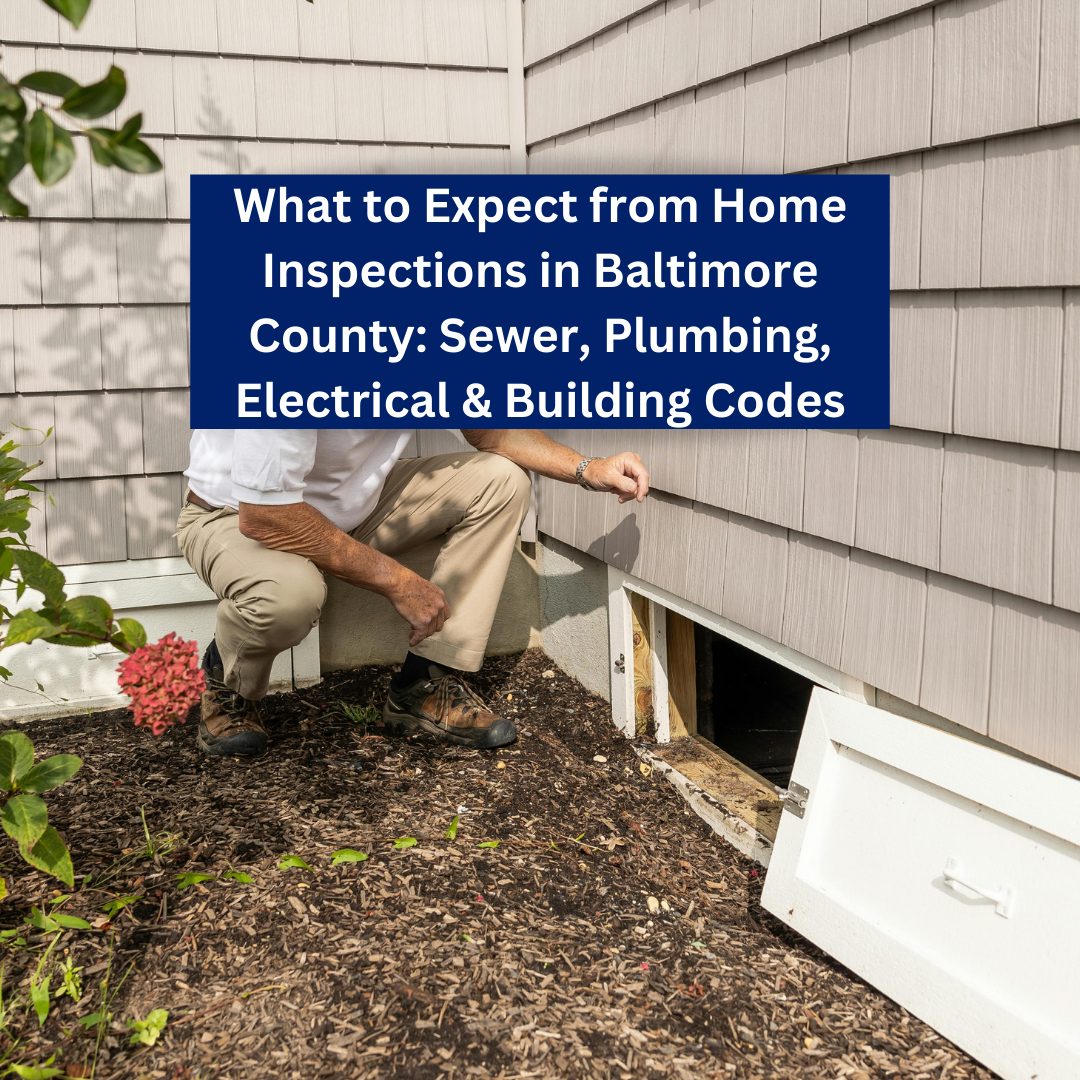What to Expect from Home Inspections in Baltimore County: Sewer, Plumbing, Electrical & Building Codes
Buying a home in Baltimore County is an exciting step, but it often comes with surprises—especially once the home inspection begins. Inspections are designed to uncover the condition of a property beyond what you see during showings, and in areas with older housing stock like Towson, Parkville, or Perry Hall, issues often pop up in the major systems of a home. Understanding what inspectors look for and what surprises buyers typically encounter can help you prepare for negotiations and future repairs.
Sewer Line Evaluations
One of the most overlooked (and expensive) problems in Baltimore County homes is the sewer line. Many older homes still have original clay or cast-iron pipes, which can crack, collapse, or become clogged with tree roots. A traditional home inspection does not include a sewer scope by default, so buyers often opt for an additional sewer camera inspection. This can save thousands by identifying issues before settlement, especially in neighborhoods with older infrastructure.
Plumbing System Updates
Inspectors will review visible plumbing to identify leaks, water pressure problems, and the type of piping used. In Baltimore County, it’s not uncommon to find polybutylene pipes in homes built between the late 1970s and mid-1990s, which are known to fail. Galvanized pipes are also common in older homes and may be corroded, reducing water flow. While many sellers have updated to copper or PEX piping, plumbing issues are one of the most frequent surprises for buyers.
Electrical Safety
Electrical systems in Baltimore County vary widely by the age of the home. Inspectors commonly find outdated fuse boxes, knob-and-tube wiring, or improperly grounded outlets in homes built before the 1960s. Even in more modern homes, amateur electrical work is a surprise that shows up often—things like overloaded circuits or missing GFCI outlets in kitchens and bathrooms. These issues can present fire hazards and usually need correction to meet today’s safety standards.
Historical Building Codes & Older Homes
Many homes in Baltimore County—especially in areas like Catonsville or older parts of Towson—were built long before today’s building codes. Inspections won’t require a home to be “up to code,” but inspectors will highlight safety concerns. For example, staircases that are too steep, lack of egress windows in basement bedrooms, or railings that don’t meet modern height requirements are common findings. These aren’t always deal breakers, but buyers should know that updating older homes can require careful balancing of code compliance and historic preservation.
Common Surprises Buyers Encounter
- Old or failing sewer lines (often requiring a camera inspection)
- Outdated plumbing materials like galvanized or polybutylene
- Knob-and-tube wiring or overloaded panels
- Basement water intrusion and drainage issues
- Cosmetic renovations that hide underlying problems
While these issues may seem intimidating, knowing what to expect helps you budget for repairs and negotiate with confidence. A good inspector will not only point out problems but also give context—helping you decide which issues are major and which are manageable.
🔎 Baltimore County Home Search by Neighborhood
Looking for a home in Baltimore County? Explore active listings in some of the most popular neighborhoods and towns. Click below to see homes currently for sale, updated in real time.
📍 Baltimore County Areas
- Towson
- Catonsville
- Owings Mills
- Essex
- Dundalk
- Parkville
- Perry Hall
- Cockeysville
- Hunt Valley
- Lutherville-Timonium
- Randallstown
- Middle River
- Nottingham
- Rosedale
- Reisterstown
- Halethorpe
- Arbutus
- Kingsville
- White Marsh
📅 Ready to Start Your Home Search?
Let’s talk about your goals and create a plan for your next move in Baltimore County.


 Facebook
Facebook
 X
X
 Pinterest
Pinterest
 Copy Link
Copy Link
